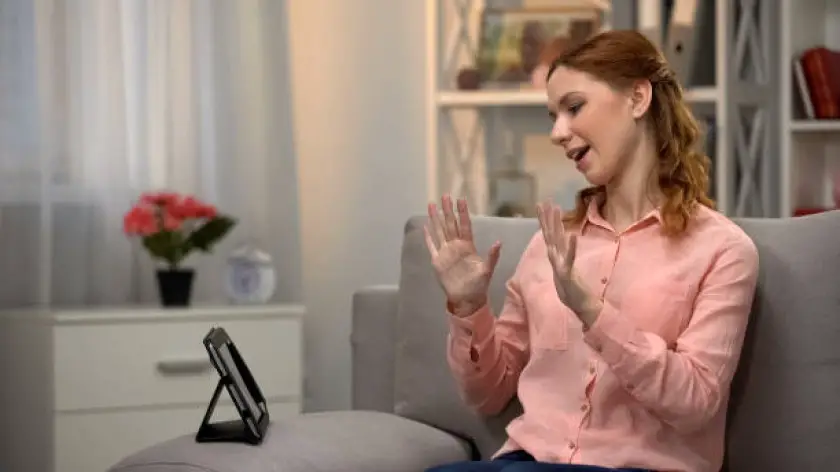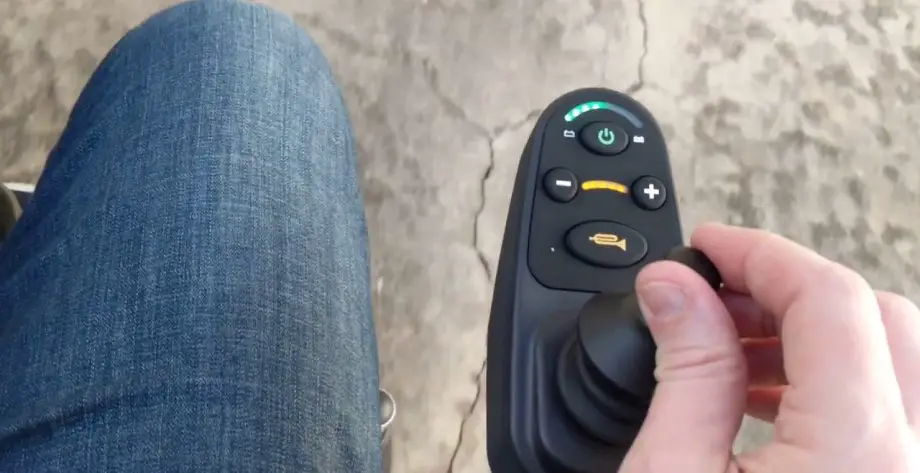Since time immemorial, communication has always been a crucial part of human societies.
People communicate for many reasons, ranging from exchanging greetings with family and friends to conducting negotiations with clients and business partners.
With the advent of modern means of communication such as the telephone, real-time communication has become possible with people separated by long distances.
However, communicating with persons who have hearing impairments over the phone can be quite challenging. It requires more advanced technology.
Read on to discover the available techniques for calling a hearing-impaired person.
Table of Contents
- 2 Unique Ways You Can Communicate with a Deaf Person on the Phone
- Useful Tips for Using Telecommunications Relay Services
2 Unique Ways You Can Communicate with a Deaf Person on the Phone
There is a wide variety of telecommunications relay services and communication technologies that can be used to call deaf persons on the phone.
Voice-based and video telecommunications relay systems can be used for this purpose.
It is a legal requirement for American telecommunications service providers to provide means for relay services to make their services inclusive to deaf persons. Disabled people also have the right to confidentiality in the course of using these services.
Related: How to Feed a Disabled Person (Ultimate Guide)
1. Video Relay Services

Video Relay Services (VRS) enables people with hearing impairments to call and communicate with other similarly disabled people as well as hearing people.
This system works through the use of video telecommunication technology facilitated by sign language interpreters or communications assistants.
A hearing person uses their conventional landline telephone or smartphone to reach the communication assistant (CA), who proceeds to relay their conversation with the deaf person(s). The following are steps typically used to contact deaf persons via VRS.
- The hearing person contacts a VRS provider via phone
- Upon the establishment of contact with the VRS provider, a communications assistant (CA) also known as Video Interpreter (VI), joins the call. This is a trained interpreter of sign language
- The caller proceeds to ask the CA to contact a deaf person whose phone number the caller provides
- The CA makes the call, which will be visible as a video call request on the recipient’s smartphone
- When the call recipient picks the call, the interpreter translates whatever the hearing caller says to sign language for the deaf person’s benefit. The deaf person responds with sign language and the interpreter voices it to the hearing caller
There is visual contact between the interpreter and the deaf party. Conversely, deaf people can connect to interpreters and have them call and relay conversations with hearing persons.
In the United States, disabled persons can access VRS at no cost. Neither the caller nor the recipient has to pay for the call. VRS companies send the bills for their services to the government instead.
The Federal Communications Commission (FCC) picks up the bill. Only duly registered disabled people, however, can legally access this service. Furthermore, there are many mobile apps that also provide VRS services.
While the Video Relay Service system is an efficient means of communicating with deaf persons, it has a few drawbacks. These include the fact that a strong web connection, which may not be available to some persons, is mandatory for the system to work.
2. Voice-based Relay Services

These are audio-based means of communication with deaf persons. Various types of voice relay services can be used for different types of disabilities. Some examples include the following.
Related: Here’s How Much Money You Get for Mental Disability
Voice Carry Over (VCO)
This system is for people with hearing impairments who still have good speaking and reading abilities.
With VCO, such individuals can communicate with their friends and loved ones via a communications assistant. Calling a deaf person through this system can take this procedure.
- Using your VCO phone, contact a VCO relay service provider using their unique short codes
- When connected to a communication assistant, give the phone number of the person whom you wish to contact. You may also be required to provide the relevant area code
- Upon confirmation of connection with your desired recipient, proceed to discuss with the person
- The communication assistant types everything you say verbatim and relays them to the receiving party, who can read the message in text form on the screen of their phone
- To confirm that you have finished your speech and would like the call’s recipient to respond, indicate by saying any other word or phrase prescribed by the VCO service provider for this purpose
- The communication assistant will let you know what phrases to use. The recipient does the same to show that you can speak
- When you’re done with the conversation, you can indicate by giving the ‘end’ signal verbally in the approved manner
Captioned Telephone Service
This method utilizes ultra-modern automatic voice transcription technology to enable deaf persons to read verbal messages from hearing persons in text form. The calling process usually follows this format.
- A hearing person makes contact with a voice transcription service provider. For this, one can use apps designed for that purpose. Other web-based links may also be used
- The service provider, through its communication assistant, establishes contact with the deaf recipient and converts what the caller says to text with the aid of digital voice transcription technology for the deaf recipient’s benefit. The recipient can read the text from his device’s screen
- These texts can be set to larger or smaller fonts if the intended recipient has optical deficiencies
Related: How to Get a Disabled Person into a Boat
Useful Tips for Using Telecommunications Relay Services
Communicating with deaf persons via relay services can be quite complicated, especially for first-time users.
With these tips, however, you’ll find the process a lot easier.
- If calling older deaf persons, ask the communication assistant to allow the phone to ring longer when making the call
- Talk at a moderate pace to allow the communications assistant to type or sign everything you say to the recipient. If you speak too rapidly, the interpreter may miss some details in your message or make mistakes in translation
- It is a good idea to start a new sentence only when you hear a pause in the relay operator’s typing
- Address the call’s recipient directly. While the communication assistant plays the crucial role of relaying your messages to its intended recipient, you must remember that the interpreter is only a middleman and not involved in the conversation at all
- Direct your speech to the call’s recipient as though you were having a conversation with them without the presence of the communication assistant
- Use the required signal phrases. The communication assistant as well as your call recipient need to know when you’re done with your message, and it is the other party’s turn to respond. Always remember to give the “Go Ahead” signal at the end of each message
- You can say “Goodbye” or any other approved signal to signify the end of the call



